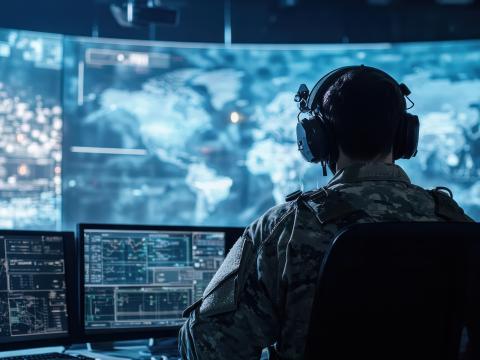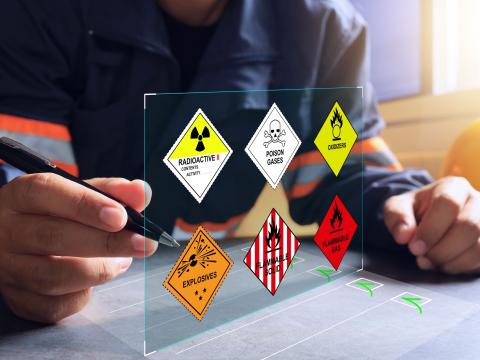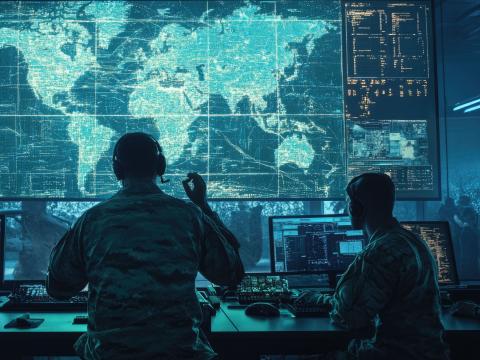Army Authorities Expect New Tools To Help Advance TiC 2.0
U.S. Army personnel are stressing the significance of integrating innovative technologies into their forces to assist in propelling the Transforming in Contact (TiC) 2.0 approach. To push this transition forward, 101st Airborne Division leaders introduced two new technologies that could contribute to bolstering the Army’s new approach: the decoy emitter and the logistics statistics, or LOGSTAT, app.
The decoy emitter gives warfighters the ability to trick their adversaries while on the battlefield, according to Maj. Tyler Johnson, Battalion Executive Officer, 1st Battalion, 187th Infantry Regiment, 3rd Brigade Combat Team, 101st Airborne Division (Air Assault). More specifically, soldiers deploy these decoy emitters to the combat zone to make it appear to enemies that they are posted in one place, when in reality, they are positioned in another area. U.S. troops expect this deception to cause adversaries to attack their fabricated location, wasting time and resources in the process.
“We saw the enemy forces chasing strange service set identifiers and believing their equipment was malfunctioning when they found no friendly force at the locations,” Johnson said at TechNet Augusta 2025, held in Augusta, Georgia. “Similarly, during a recent nuclear, biological and chemical defense, the tactical deception masked the true location of the command post, causing the enemy to expend 40% of their classified resources or ammunition on a medical node and not on a command and control node, saving the commander’s ability to continue to control the fight.”
The decoy emitter is relatively cheap, as it costs about $100 per unit. Additionally, the tool signifies the Army’s effort to revolutionize electronic warfare within its operations, and it absolutely plays a role in strengthening the Army’s new TiC 2.0 approach, according to Johnson.
“I think that’s something we have to have in the future,” Johnson added. “If we don’t do that, then again, the enemy is going to define the electromagnetic spectrum future on the battlefield.”
As for the LOGSTAT app, this technology provides soldiers with an easier way to complete their logistical reporting. LOGSTAT has proven to aggregate those logistical reports, and it automates the process of updating supplies, including water, fuel, ammunition and others. That process traditionally takes about four hours, but with the integration of LOGSTAT, it can now be completed in about 15 to 20 minutes, according to Johnson.
If we don’t do that, then again, the enemy is going to define the electromagnetic spectrum future on the battlefield.
“You think about the additional four hours [a person] can dedicate to other future operations instead of worrying about how many classes of supply does the company have. That’s the kind of integration we’re talking about, and that’s the kind of technology we are looking for.”
LOGSTAT is so new that it is still in the developmental phase, so Johnson is uncertain about its role in accelerating the TiC 2.0 transformation. Officials are still playing with it and waiting to see how it matures over time, according to Johnson.
This all comes as Army leaders are in the process of advancing their TiC 2.0 approach. Through this next phase of the TiC initiative, officials are expected to revolutionize how units rapidly equip, test and acquire groundbreaking technology, according to Army officials.
TechNet Augusta is organized by AFCEA International with help from the U.S. Army Cyber Center of Excellence. SIGNAL Media is the official media of AFCEA International.




Comments